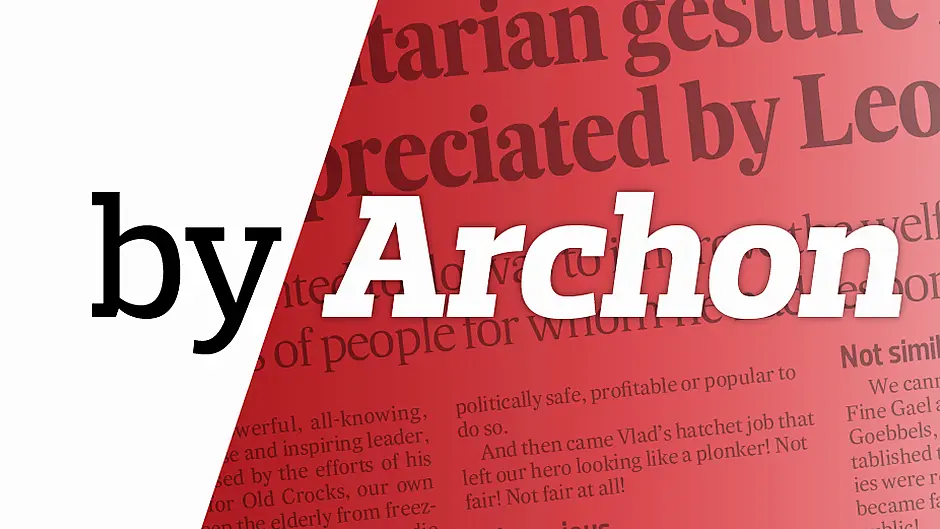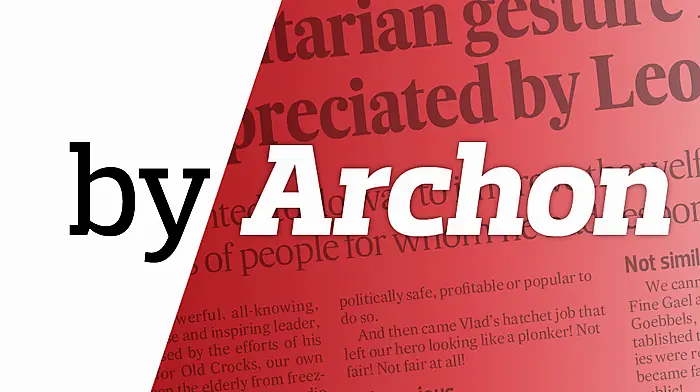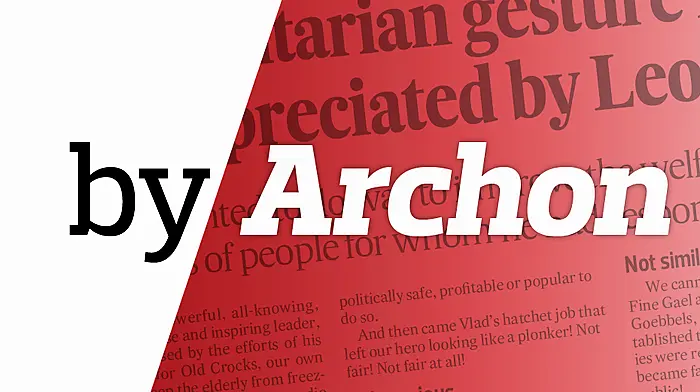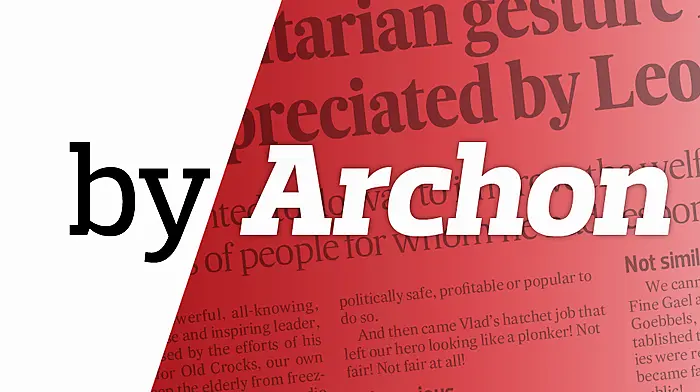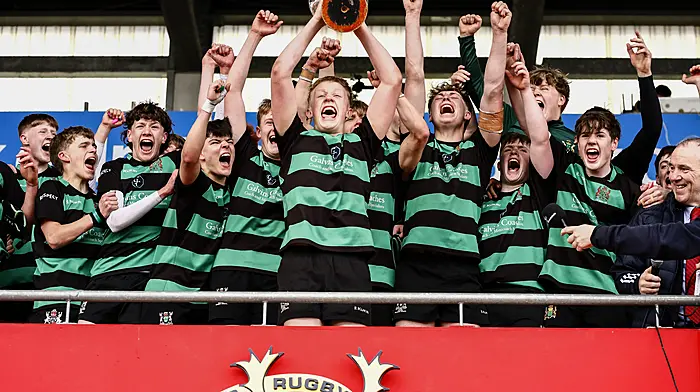His hostility towards the IRA was such that some of the ‘hardy’ boys had to be restrained from ‘plugging’ the reviled cleric
RECENTLY, from the murky bog-waters of clerical Ireland came references to a former Bishop of Cork, one Daniel ‘Danny Boy’ Coughlan (or Coholan, which he preferred) whose political and religious behaviour is legendary.
Born in Kilmichael, Coughlan was a professional theologian, described recently as ‘a guardian of orthodoxy and a man of the manuals.’ But it was his loyalty to the Crown that earned him the Leeside notoriety for which he’s still remembered.
Very much pro-British, Coughlan – at the height of the War of Independence – warned the faithful that any person taking part in an ambush in which British soldiers were injured, held as hostages, or murdered would be promptly excommunicated by the Catholic Church.
Indeed, his hostility towards the IRA was such that some of the ‘hardy’ boys had to be restrained from ‘plugging’ the reviled cleric.
Worse was to follow in the Civil War (1922-23): Unable to conceal his contempt of the anti-Treaty ‘men of no property,’ he refused to allow the body of IRA hunger striker, Denis Barry, to lie in a Cork church.
Nor would he permit a Catholic burial for those killed in action: ‘Republicanism in Ireland for the last twelve months has been a wicked and insidious attack on the Church and on the souls of the faithful committed to the Church,’ he said.
Controversial character
Many of the IRA combatants that he excommunicated never again had anything to do with religion (including a relative of this scribe).
And, he certainly had no time for the Church of Ireland, or anyone who might style himself ‘Bishop of Cork’. On his deathbed, he was informed that the Protestant Bishop of Cork, Cloyne and Ross had died. Turning to those at his bedside, Cohalan’s last gasp was ‘now he knows who’s the real Bishop of Cork’!
Historian CJ Woods comments that it is hard to avoid the conclusion that the bishop’s moral judgements were influenced by his politics. He also points out that, at Maynooth, the bishop was remembered as ‘a splendid horseman, always well mounted who hunted with the Ward Union during his time as professor of moral and dogmatic theology.’
But today, among the ordinary people of Cork, he is remembered for something much darker: the disinterest he showed in the scandalously-high death rate at the Bessborough orphanage in Cork city.
And it was not that he didn’t know what was going on. Indeed, he personally was responsible for having a child ‘interned’ in the place. She was a Mary Bowles who was arrested on January 13th, 1921 near Clogheen for having concealed an automatic pistol and ammunition under her large coat. (Her brother was Mick Bowles, the IRA Quartermaster of the Clogheen Company of the IRA in Cork).
Mary was caught moving part of an arsenal hidden next to her home to a safer place and, for her efforts, she was sentenced to imprisonment in a Catholic Church-run Magdalene Laundry until she reached the age of 19.
Which is interesting, as it shows that British authorities saw Magdalene Laundries as penitentiary workhouses and suitable places for dumping children with ‘a criminal disposition’! (Interesting too that the only Irish newspaper at that time to condemn the exploitation of children in Magdalene Laundries and Catholic asylums was the republican ‘An Poblacht’).
In the Mary Bowles case, the IRA secured her transfer to Bessborough and her eventual release .
Arch-conservative
Conditions within the Magdalene Laundries didn’t much concern the Cork bishop, but when the State asked for details relating to the care of infants in Bessborough, he complained that it was trying to compel a religious order to behave in a manner contrary to Canon Law.
In fact, whenever the State became uneasy at conditions in Bessborough, the bishop argued that Canon Law did not permit the nuns to reveal the identity of the women who were resident, nor their home or current addresses. Such information had to be kept a secret, he ordered.
He also opposed Department of Health inspections on the grounds that the State did not have the power to make decisions and judgements regarding the religious community which ran the place, the Congregation of the Sacred Heart of Jesus and Mary.
An arch-conservative and fearful of the advance of socialism in this country, he warned the government that it could not make demands on hospitals as that would be contrary to the Canon Law of the Catholic Church.
And, he declared, since Bessborough was not a state-run institution ‘any inspection should not encroach on its independence as a religious community.’
In the meantime, between the years 1922 and 1946, and in spite of Coholan’s Canon Law nonsense, 674 infants died at the home. About which the Bishop showed no interest!
Nor did confidential reports concern him, even when they disclosed that ‘the greater number (of babies) were miserable scraps of humanity, wizened, some emaciated and almost all had rash and sores all over their bodies, faces, hands and heads.’
Fact is that the Department of Local Government and Public Health did not properly monitor or inspect the place, even when alarm was growing in Cork city at the number of infant deaths, and civil servants were warning of ‘a public scandal.’
Historic questions
Nonetheless, it’s a fact that a chief medical adviser, who examined the infants, wanted to close the place, reporting that deaths had been going on for years and nothing had been done.
His damning report alarmed Bishop Cohalan who complained to the Papal Nuncio of the dangers of a public scandal. The Nuncio put pressure on Taoiseach Eamon de Valera who agreed with the report’s critical findings but added that ‘a public scandal’ was to be avoided at all costs.
Needless to say, the religious order at the centre of the controversy was of the same opinion, especially with regard to any investigation that might lead to the withdrawal of State funding. There had to be no rumours or malicious gossip that would discredit the nuns.
Result? Bessborough was disinfected, painted and a new doctor and matron were appointed. Things rumbled on until 1947 when the State’s chief medical adviser had enough. He temporarily closed the place and sacked the Sacred Heart nun in charge.
But, to Cork’s lasting shame, there never was a proper investigation into the 674 infant deaths, nor an explanation as to why the place had an 82 per cent infant-mortality rate at a time when Ireland’s infant-mortality rate was about 7 per cent.

